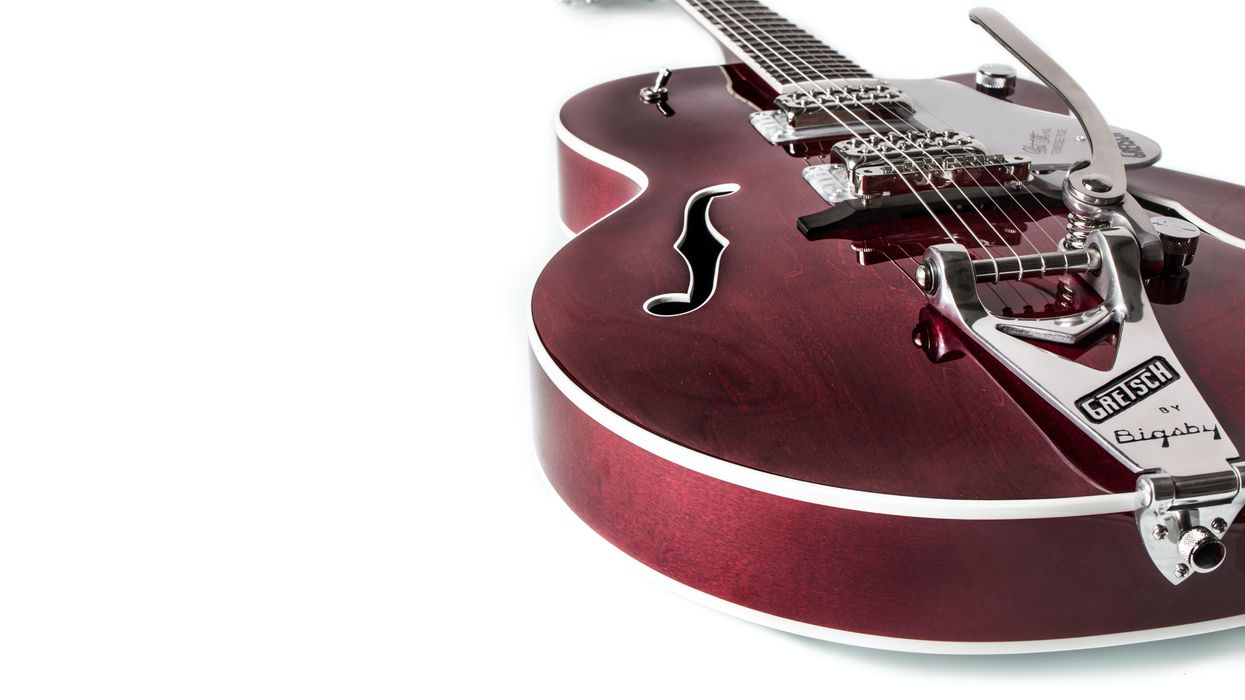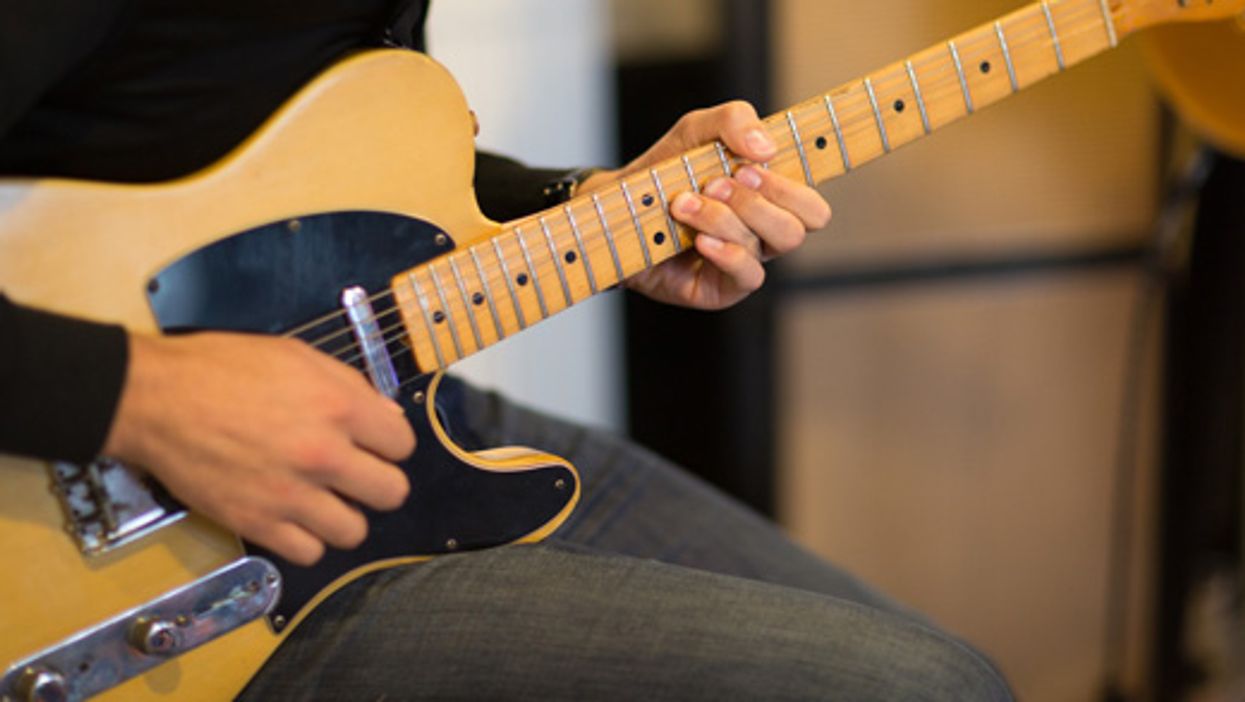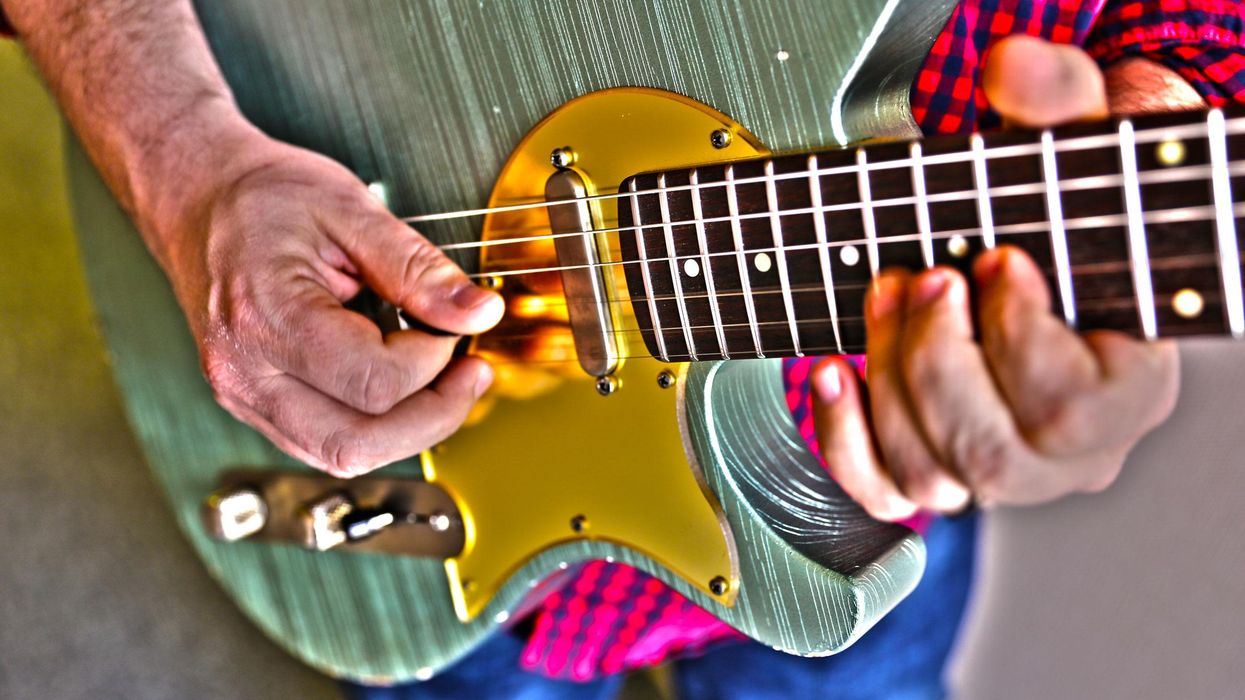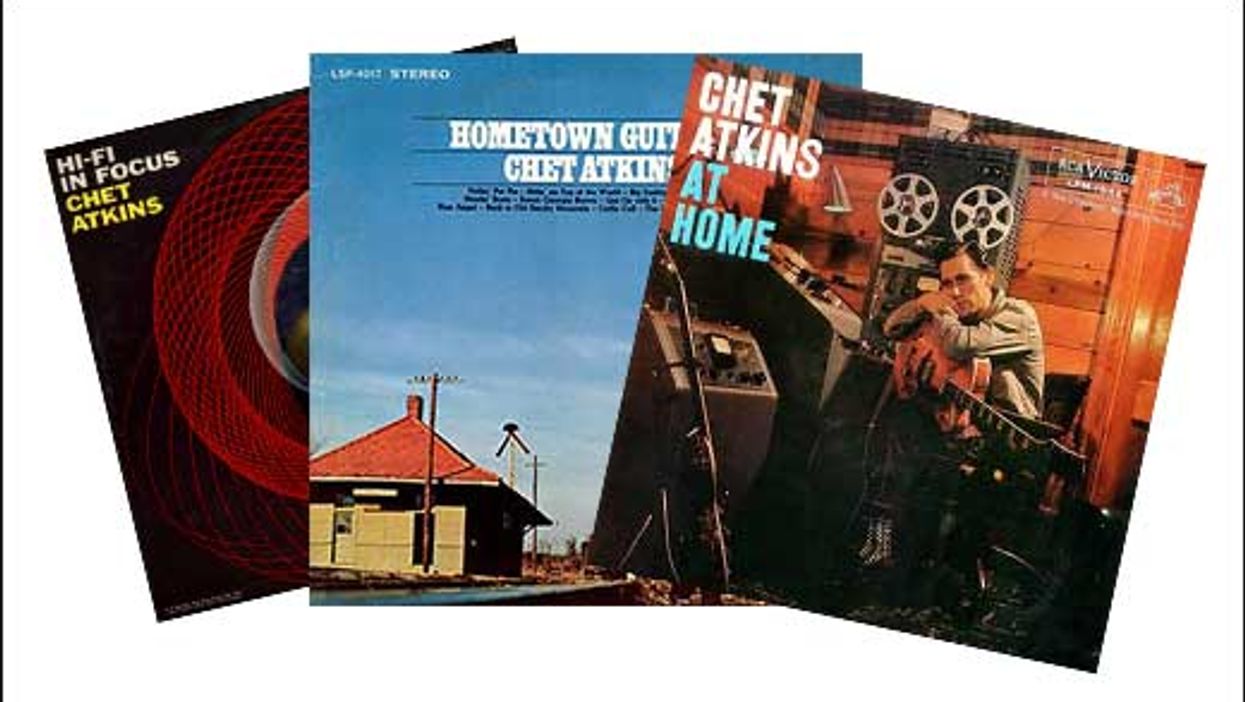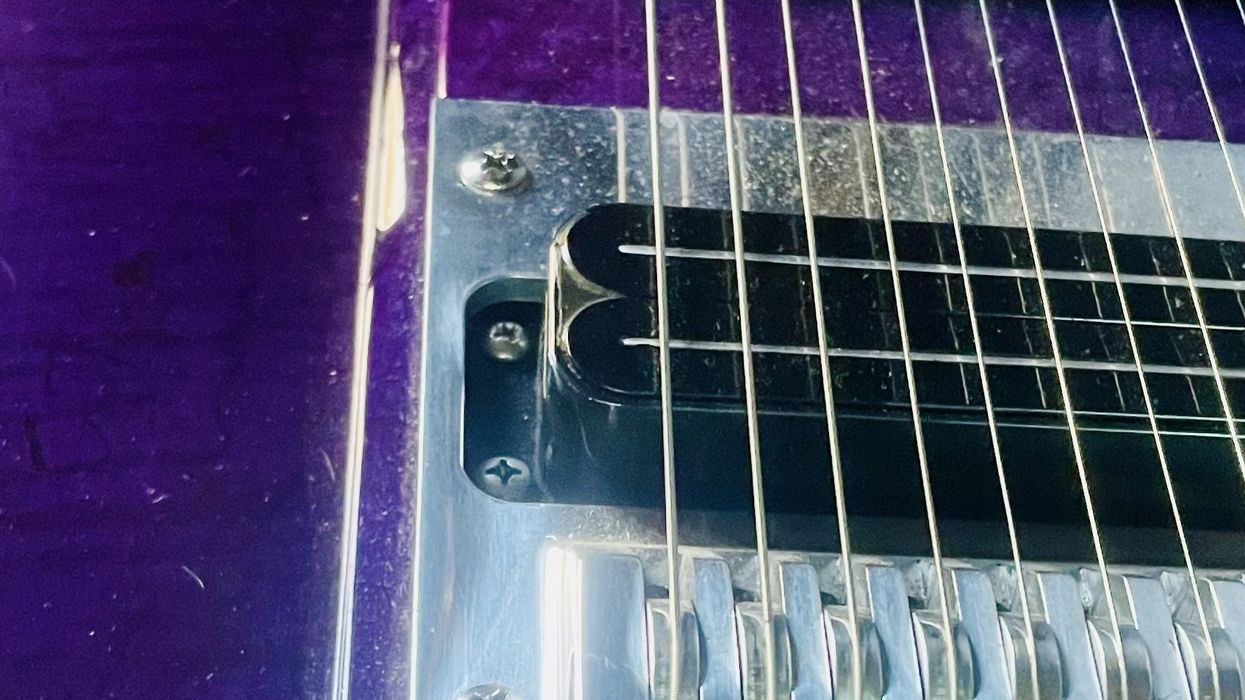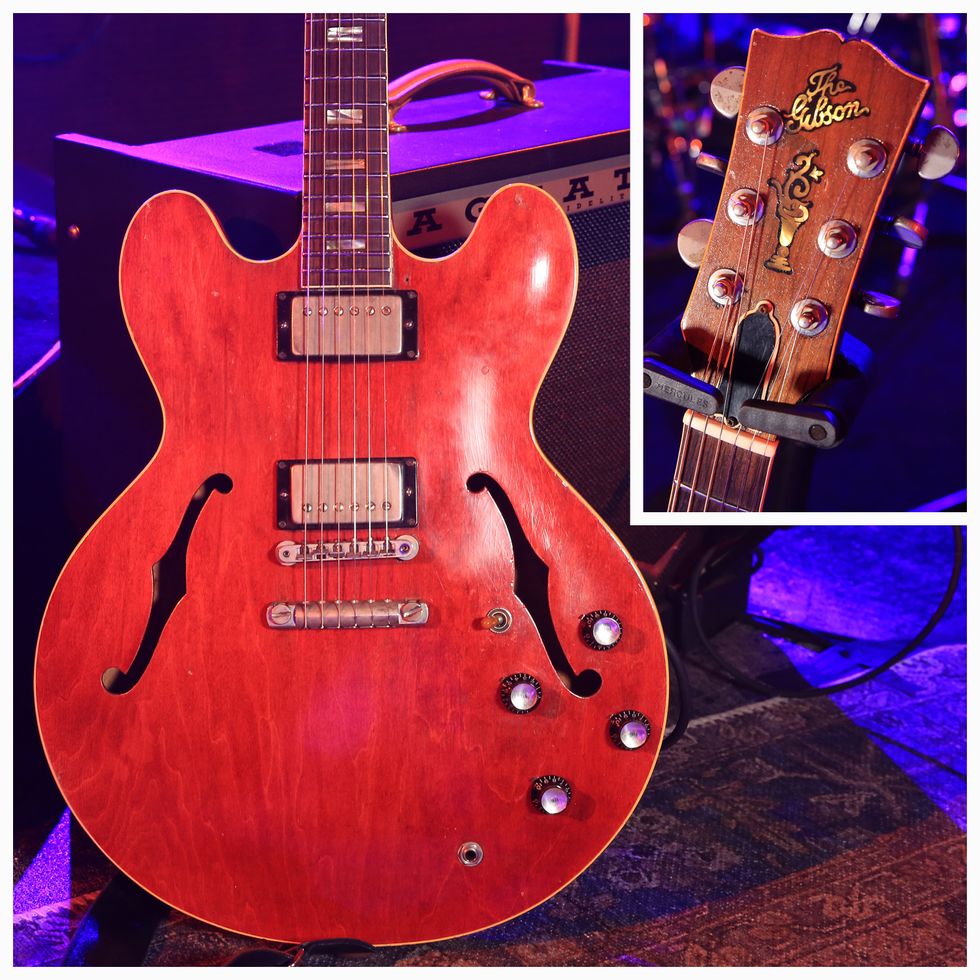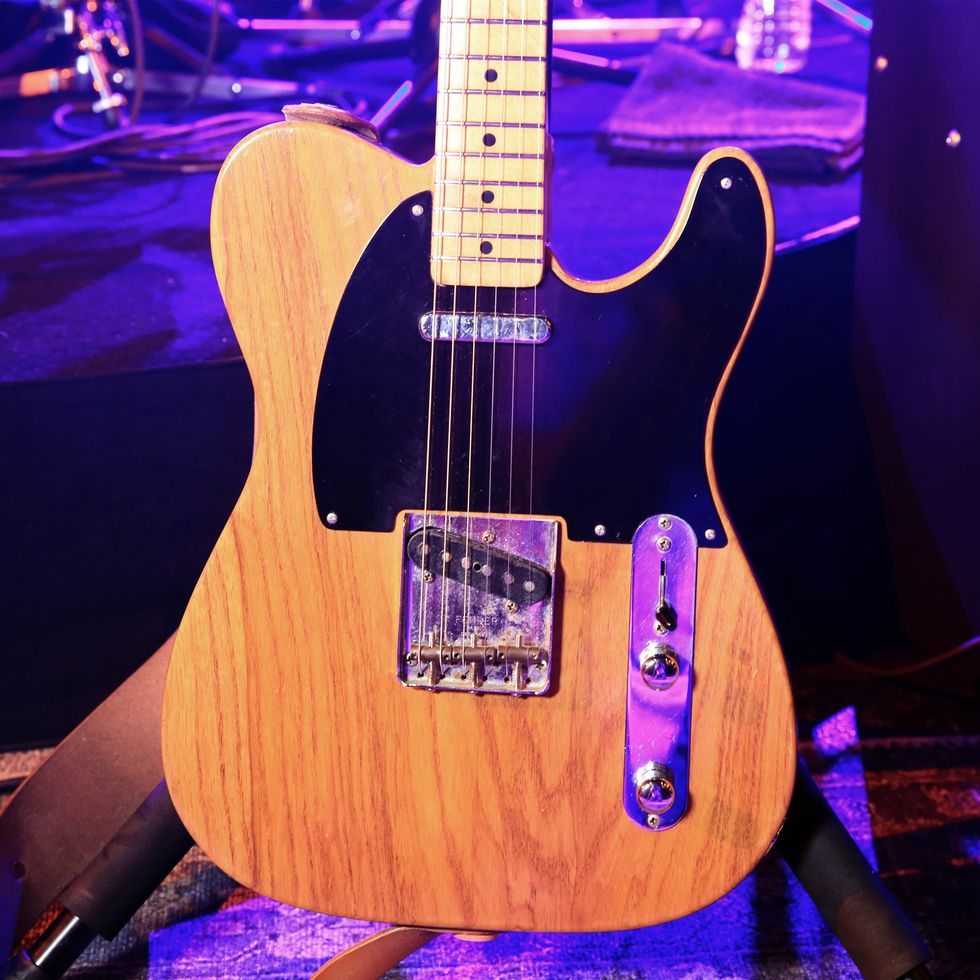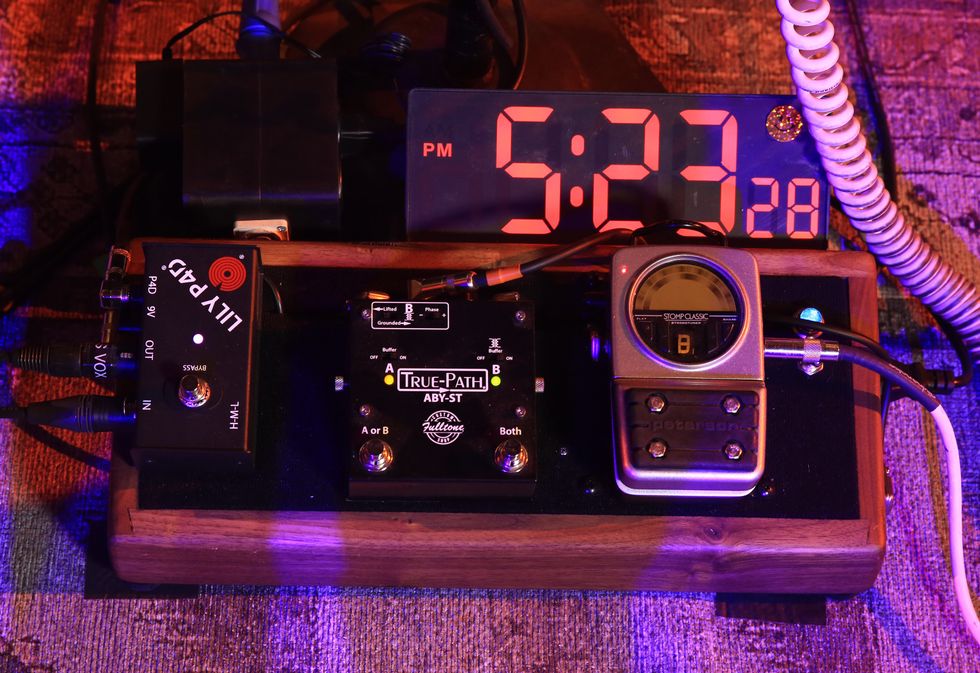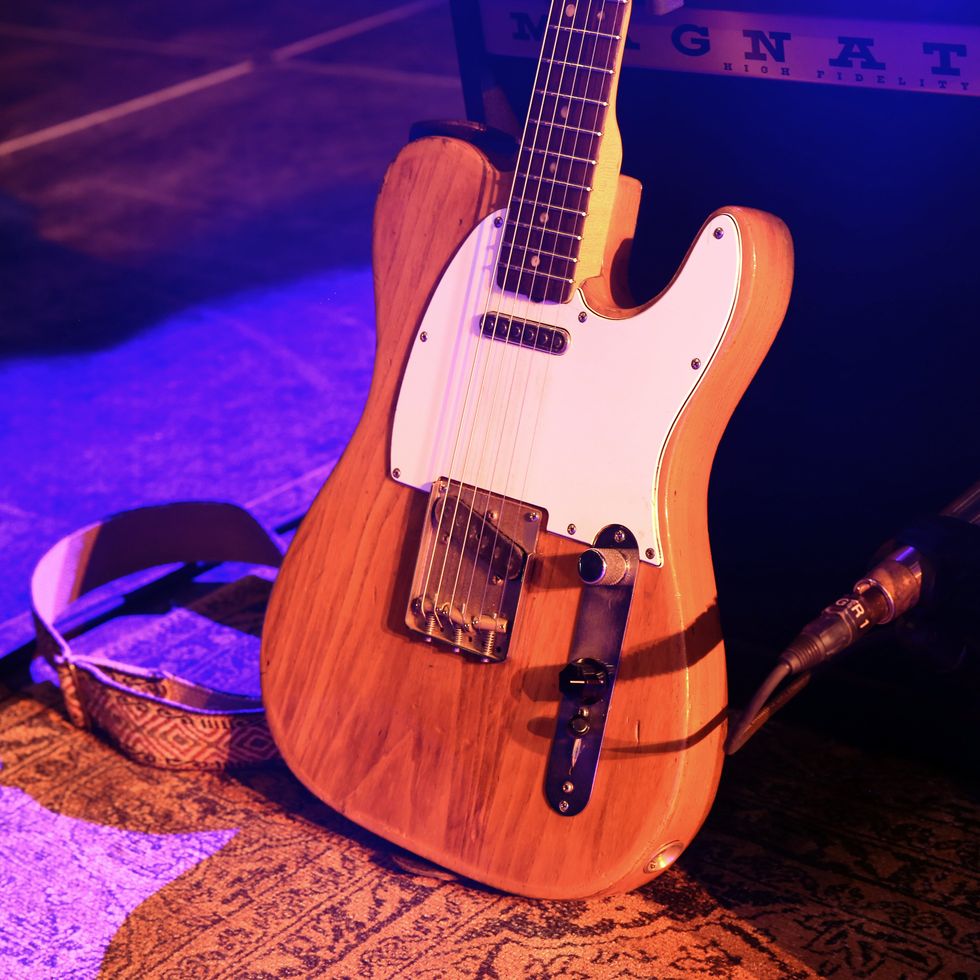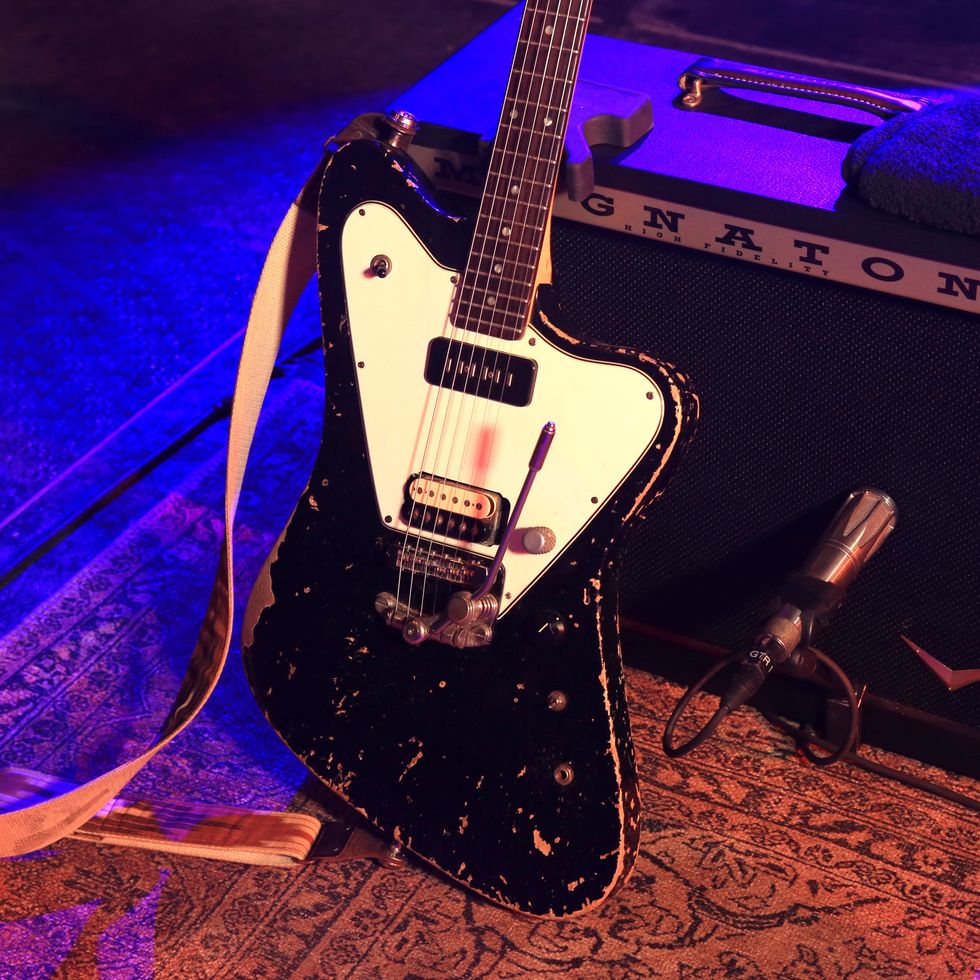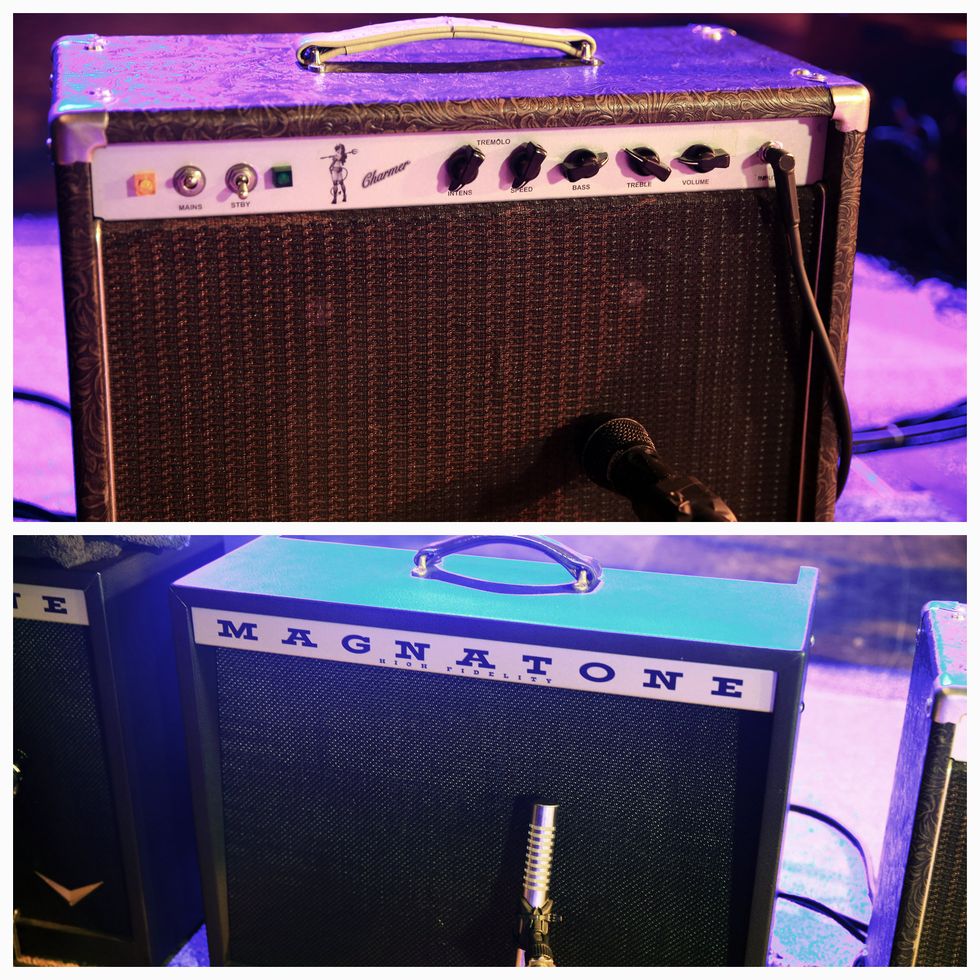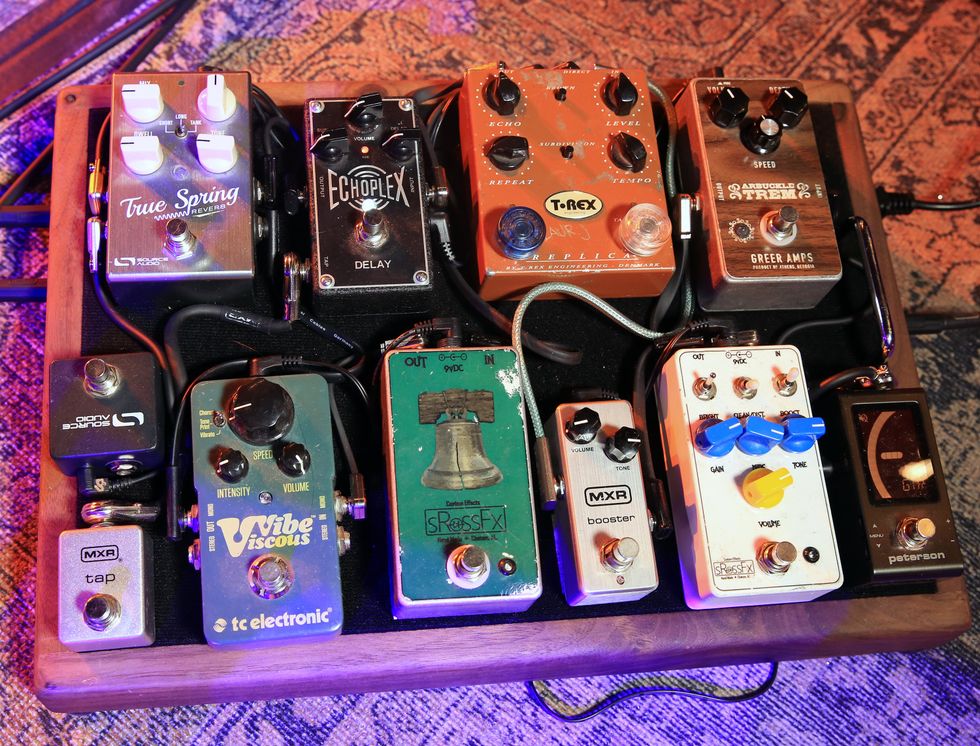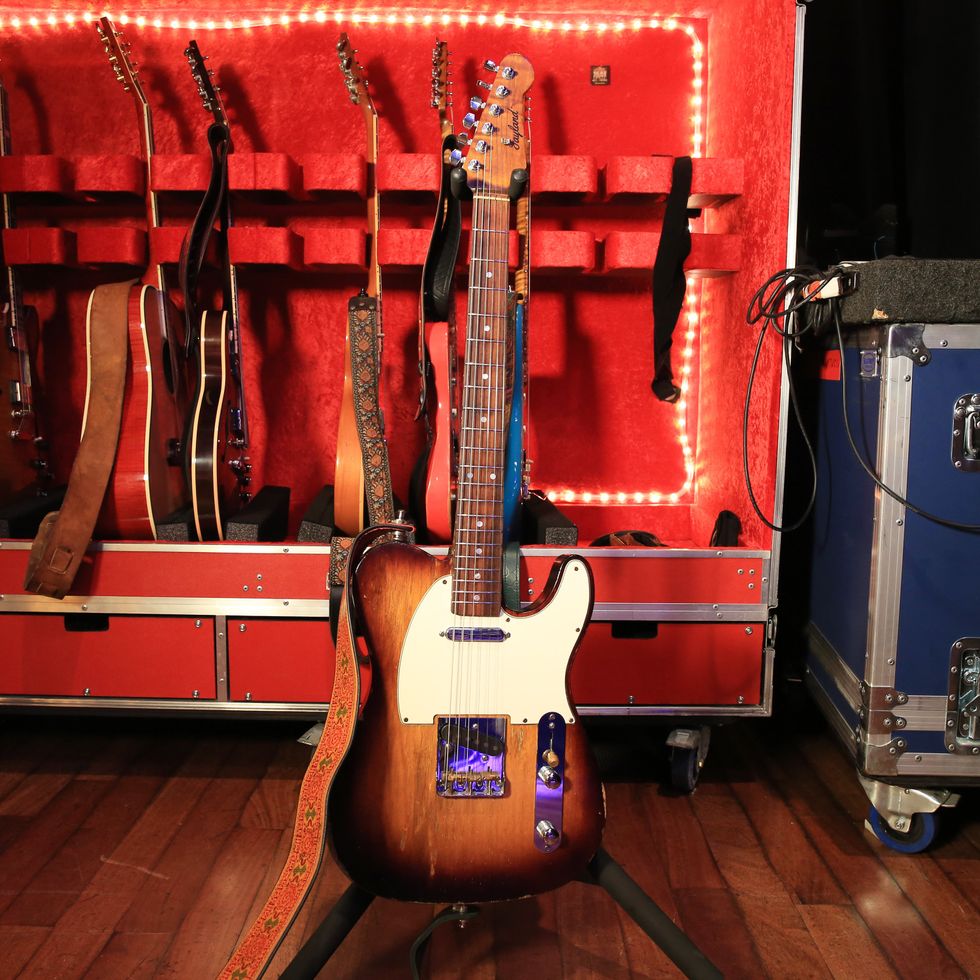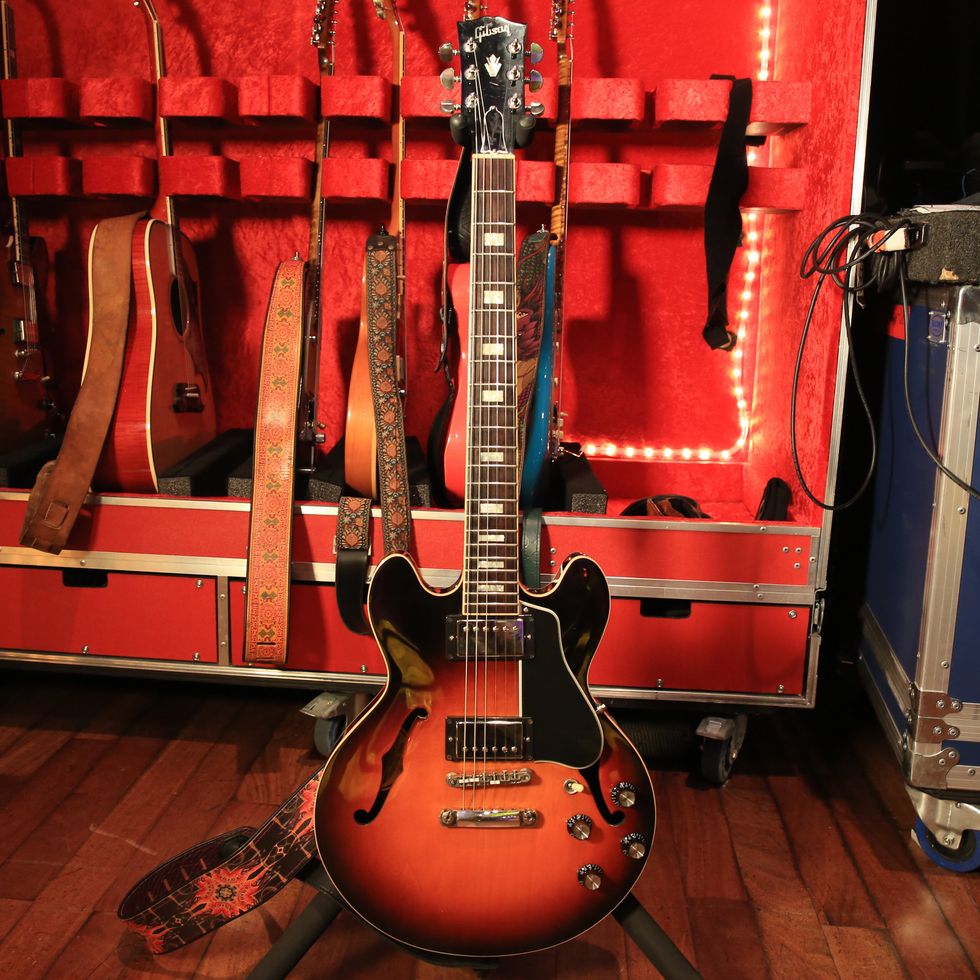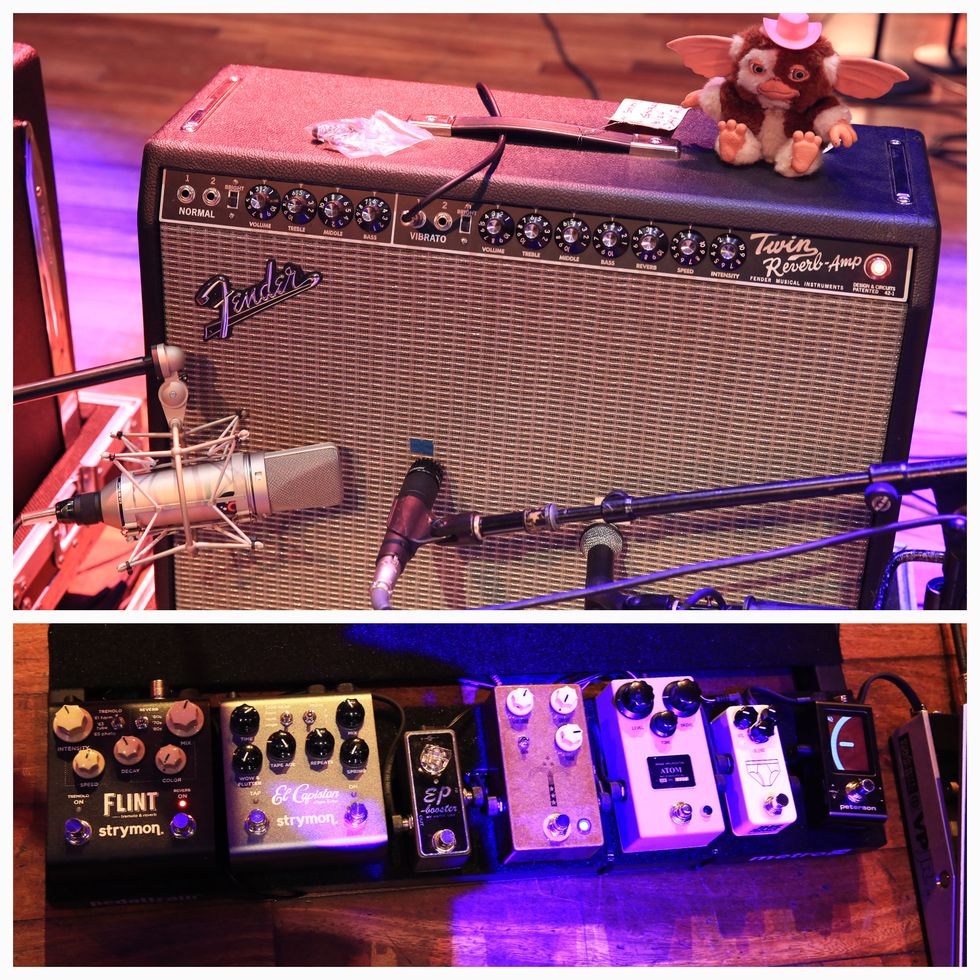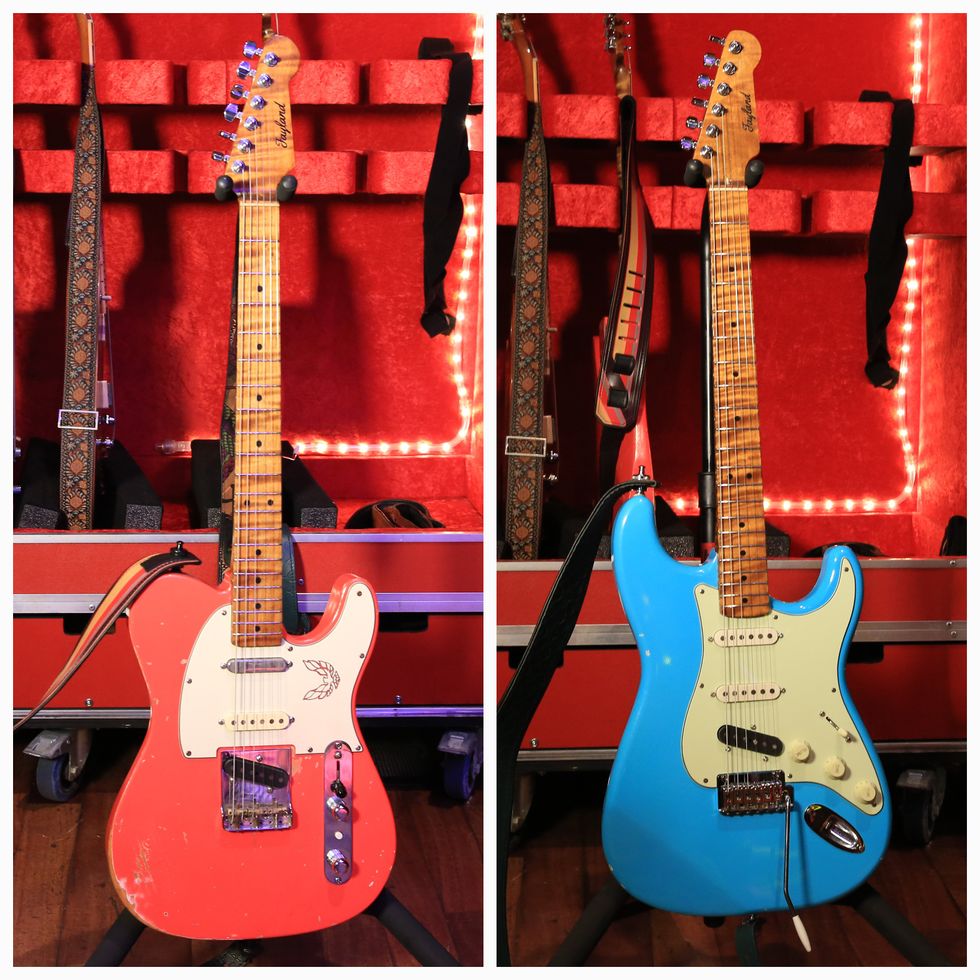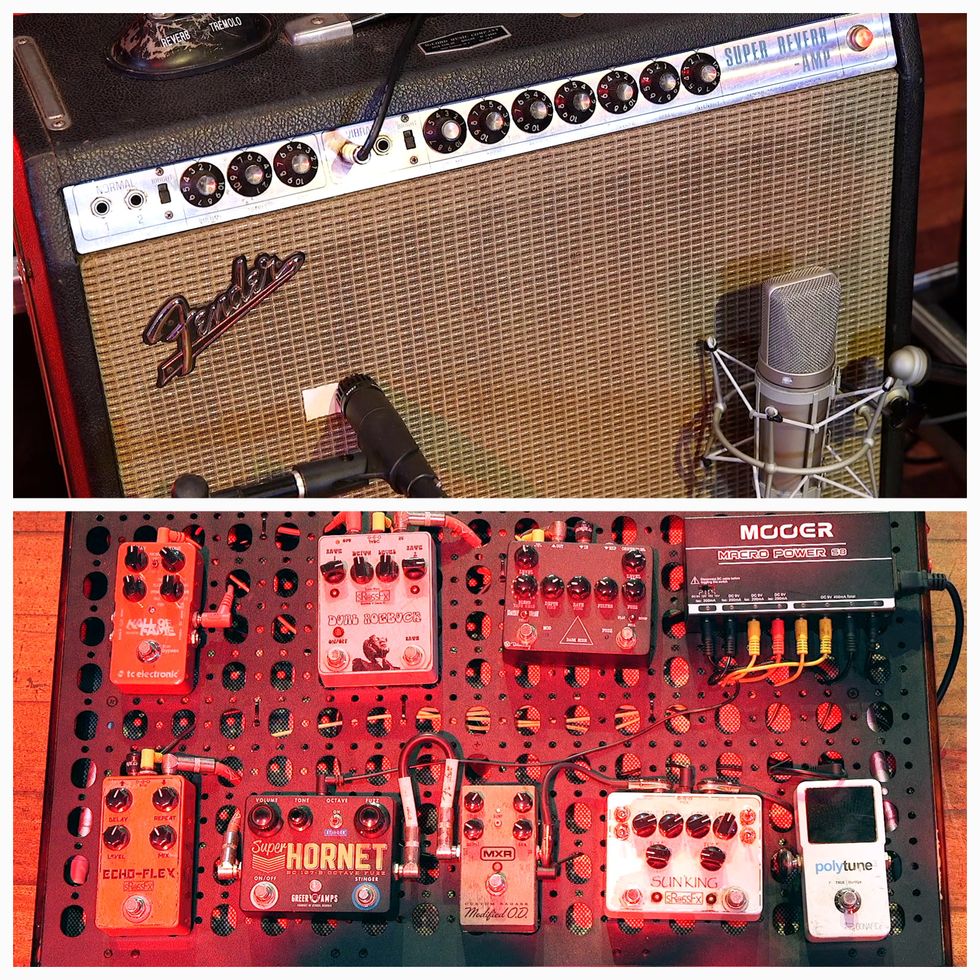I’m not talking about playing in open position, but rather substituting and adding the flavor of open notes whenever possible into your lines. It creates extra tension and a cascading legato feel that’s so important to my style that I can’t play without it. It has become a pillar of my country guitar technique.
All you need to do is listen to the way Chet Atkins approaches this technique in his music like the ending to his version of “Blue Angel” (or better yet “Cascade”). Once I heard this technique, I had to understand it better. Other artists that come to mind that regularly use open-string licks are Danny Gatton, Merle Travis, Redd Volkaert, Jimmy Olander, and many others.
CHET ATKINS - Cascade 1977
Careless Love I Jimmy Olander
In this lesson I’ll get you going with some simple, and not so simple, ways to incorporate this technique and get you playing over major, minor, and dominant 7 chords. These are the three most common chords you’ll see in country and pop music so hopefully they’ll have an instant payoff. When I first started working on this it was painstakingly slow. So be patient, buckle up, and let’s dive in.
In Ex. 1 is a reimagined G major scale (G–A–B–C–D–E–F#). The intervals between the fretted and open notes will determine how much tension there is in your line. Minor and major seconds will typically have heavy tension, which is fine. Remember, tension is great in music and eventually wants to be resolved. You can use the pick for every note or use hybrid picking. Experiment and find what works for you. Using a pick will give more attack to the note but using the flesh or fingernail will give you more warmth and might be slightly easier at faster tempos.
Let the open notes and fretted notes “bleed” into one another as much as possible. This is how you get the cascading legato effect. Listen closely to the audio examples to match to phrasing and length of each note. Hold onto each note as long as possible to let the notes ring into each other.
Ex. 1
We reimagine a descending line for a D major scale (D–E–F#–G–A–B–C#) in Ex. 2. The larger the string skip, the more that interval creates contrast. Notice you are literally playing a descending scale with displaced intervals and substituting open strings whenever possible. This lick ends with some chords voiced with open strings as well.
Ex. 2
In Ex. 3 we move to the key of E major, which is great for open strings since you have two open-string root notes. This is a descending line that hits all the notes of the E major scale (E–F#–G#–A–B–C#–D#). You will need some good independence on your pinky finger to hold down certain notes but with practice, that should come. It’s all part of the technique.
Ex. 3
I like using open string licks for dominant 7 chords and Ex. 4 works great over an A7. We’ve moved from playing up and down the scale to working with chord tones and blue notes like the b5 found on the 4th fret of the 2nd string. The first three groupings are all triplets which works great on adjacent strings. I resolved this lick sliding up into nicely outlining the A7 ending in an open string. Use your ring finger to bend the note on the 3rd string and slide up with your index for maximum left-hand efficiency.
Ex. 4
In this bluesy lick over an Am chord (Ex. 5), you work your way down the neck all the while incorporating open strings. Use your pinky on the 10th fret of the 4th string and to end the lick on the 3rd fret of the 5th string. A quick and effective lick for playing over a minor tonality.
Ex. 5
Ex. 6 is a tricky lick over an F#m7 chord with some slides. Your index finger will slide first, then the ring finger on the left hand. It’s important to use those fingerings as they set up the ascending part of this lick. String skipping towards the back end of the lick is vital to really outline the open 1st and 2nd strings. Let all the open strings ring as long as you can without it sounding sloppy. Listen closely to the audio example for this one.
Ex. 6
I like this ascending lick (Ex. 7) over a G7 chord. Note that you’re playing only on the top four strings for this lick starting with two quick arpeggiated lines connected with some open strings. The back half of this lick is one of my favorite ways to do quick runs using open strings.
Ex. 7
You can also incorporate a chromatic approach to your lines while using open strings. In Ex. 8, which is over an E chord, I sneak in a few passing tones to add extra tension and create some ear-twisting fun.
Ex. 8
That’s but a brief snapshot of some ways to add open strings to create cool cascading musical lines. It can be a bit tricky to initially wrap your head around thinking this way, but once you do, the sky is the limit. I like incorporating open string licks for texture and then start to intertwine them with other techniques like double-stops, pedal bends, and chord voicings. Until next time, take care!!


